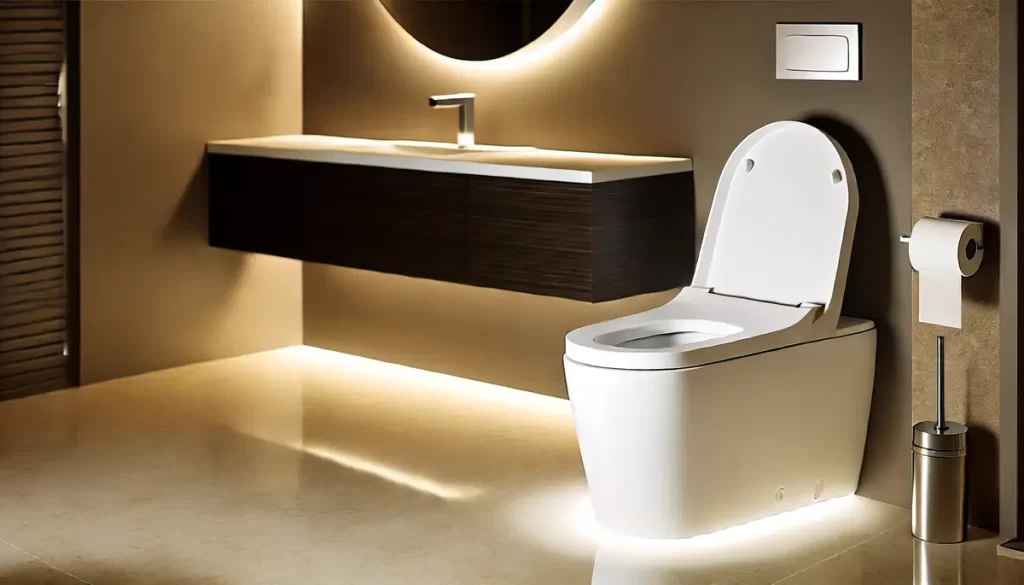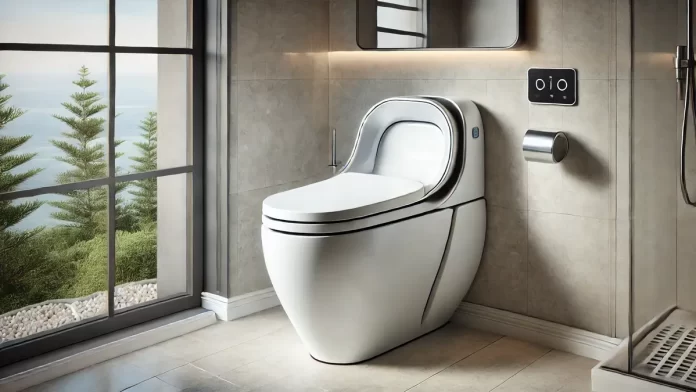Should you be thinking of installing a tankless toilet in your home? With the modern need for modern and space saving solutions, residential tankless toiletries are becoming incredibly popular among the homeowners. In this post, I will guide you through everything you ever wanted to know about residential tankless toilets; from how they work, the benefits and installation. If you’re renovating your bathroom or hoping to install in a new one, this will help you determine whether or not a tankless toilet fits your home.
What Is a Tankless Toilet?
A tankless toilet is a toilet that does not contain the standard water tank used in flushing. But these types of toilets are connected with water supply line, delivering powerful flush, as the water pressure is so strong. A tankless toilet is unlike a traditional toilet, instead of having a tank that refills after every use, with a tankless toilet there is no tank, which allows it to be sleek and save space for modern homes.

How Do Tankless Toilets Work?
Tankless toilets simply provide high pressure the very water from your home’s plumbing system that’s used directly to spray into the bowl to flush out the waste, and don’t need to store water in a tank. An electric pump is sometimes installed to get the necessary pressure for a complete flush. That’s why lots of tankless toilets are viewed as more eco-friendly: these systems often include a flush valve that controls the flow of water used and uses water efficiently.
Features of Tankless Toilets
Tankless toilets have modern designs that don’t clog space in your bathroom, are water-saving technology and look sleek. Luxury models include heated seats and a bidet attachment and then some, bringing the total cost up. The water supply has to be strong with tankless toilets and they are usually given in homes with enough strong water pressure to make them function properly.
Tankless vs Traditional Toilets
A tankless toilet versus a regular toilet is different, mainly in the way water is stored and used. Traditional models store the water in a tank, which then releases it through a flush mechanism, and tankless models use your home’s plumbing system to flush the water into the bowl directly. There is no tank, and it is the reason why tankless toilets fit less space, taking into consideration there are no minimum or maximum space requirements like other standard tank-based toilets.
How to Install a Tankless Toilet in Your Home
However, if you’re thinking about installing a tankless toilet, you will need to make sure that your plumbing system can endure such high water pressure. A lot of homeowners trust the professional plumber to install everything properly. There may be an upcharge in cost for the installation as it is more involved than a standard tanked toilet and you’ll have to adjust your plumbing for the particular tanked toilet that you install. But if installed, long-term water savings offset that cost.
The Role of Water Pressure in Tankless Toilets
The tankless toilet works only when the water pressure is right. These toilets are a direct link to the home’s water supply and thus require good pressure of water to flush the toilet properly. If you don’t have enough water pressure you may need to put in a pump or else change whatever you need to get your toilet to flush. If you’re not sure whether your home has adequate water pressure, a plumber can tell.
Learn More: How Much Water Should I Drink Each Day? The Ultimate Guide to Hydration
The Benefits of a Tankless Toilet
A tankless toilet offers water saving features, modern looks and can save you the space in your bathroom. A tankless toilet means less water per flush, so you use less water and thus enjoy a lower monthly water bill. But, also, because there is no tank to refill, these toilets can also help prevent the spread of germs due to their more direct flush system.
The Pros and Cons of Tankless Toilets
Before you can make the decision of whether or not you want a tankless toilet, you need to weigh its pros and cons, like the high water pressure to operate a tankless toilet, the potential need for an electric pump, and the overall cost of installation. The good news about tankless toilets: they are water-saving, sleek, and small. But they may entail more complicated plumbing work and higher up front costs than toilets with a tank.

How Tankless Toilets Save Water
Tankless toilets dispense a specific predetermined amount of water on each flush to use less water. That was until traditional toilets stored water in a tank, which refilled after each use. A tankless toilet, however, combines only 1.6 gallons of water with each flush—the water supply line, there is no tank to fill, so it’s more efficient for cutting water bills.
Choosing the Right Tankless Toilet Model for Your Home
When shopping for a tankless toilet for your home, consider the kind of plumbing utilized for your residence. However, some tankless toilet models need some additional equipment, such as a flush valve or a pump, so they would work optimally. Before purchasing a brand, be sure to know different brands and consult with a plumber to pick up an appropriate kind of toilet accessible to your bathroom plans and pressurizing necessities.
Key Points to Remember:
- Traditional toilets are space hog, old, and wasteful in water while tankless toilets are, modern, water saving, and space saving.
- They work using the home’s water supply and plumbing system and need high water pressure to work properly.
- It may even be easier for professionals to install a tankless toilet, particularly if your home has lower water pressure.
- One of the benefits of tankless toilets is lower water bills, reduced water use, and sleek design.
- Also, make sure you think about what you need in a tankless toilet for you and your home.
For those who want to update their bathroom with their modern style and to save on water consumption, tankless toilets are the way to go. They have both functional and aesthetically beneficial aspects if you set them up correctly.
FAQs
What are residential tankless toilets?
Modern alternative to traditional toilet without large water tank is residential tankless toilet. Instead, a direct water supply is used, which allows a more compact design. These toilets are less space taking and a great style in the bathroom. Well-efficient and effective, they employ a high-pressure water supply to flush waste from the bowl directly.
How do tankless toilets work?
The flush valve in a tankless toilet lets it flush when you use the toilet. Water in the water supply line is released at high pressure to clear waste out of the bowl. Tankless toilets can flush with less water than regular toilets; a saving that benefits water.
How beneficial is a tankless toilet?
The main benefits of a tankless toilet include space-saving design, low water use, and modern looks. The reason these toilets can save space in your bathroom is because they do not need a large tank. They also tend to use less water per flush than standard tank models, so it can be a money saver as well. Many homeowners appreciate the sleek design and the fact that they can install a tankless toilet anywhere without using up a large tank.
Are tankless toilets advantageous or not?
The advantages of tankless toilets are: they can be small and space-saving, they have a modern look, and they might save water. Nevertheless, there are a few downsides to that. For instance, should the quantity of your water pressure not be quite suitable, it will interfere with the flushing functionality. It’s also a more complicated installation which may involve a professional in order to make the plumbing compatible.


